Manner of Death: Undetermined
After Van Ingraham was found with his neck broken at the Fairview Developmental Center, police at the state institution closed the case without answers. But the patient’s heartbroken brother, a former cop, went after evidence that state investigators had missed.
I worked closely with investigative reporter Ryan Gabrielson to produce this multimedia feature for California Watch. See the full investigation.
“Manner of Death: Undetermined” won an award for Feature Storytelling from the Society of Professional Journalists (Northern California) and along with two of other videos won a duPont Silver Baton for excellence in broadcast and digital journalism.



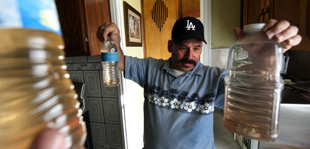

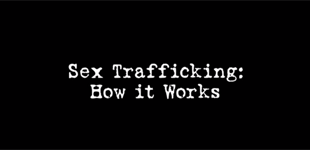
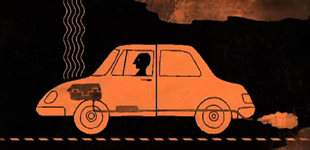

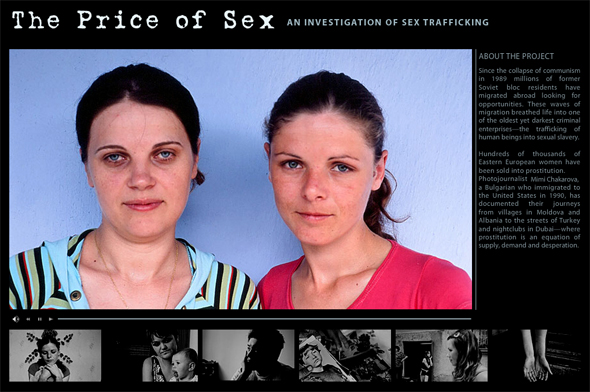

 I designed this interactive timeline for The Chauncey Bailey Project using Vuvox.com. It accompanied an Oakland Tribune story reporting that Sgt. Derwin Longmire, the lead detective assigned to investigate journalist Chauncey Bailey’s 2007 shooting, had many ties to Your Black Muslim Bakery—and several members of the bakery were suspects in Bailey’s murder. Reporters discovered Longmire had been presented with evidence that Yusuf Bey IV, the bakery CEO, was likely involved in the murder, but the detective failed to document that evidence in the case file. This timeline tracked Longmire’s many connections to the Bey family.
I designed this interactive timeline for The Chauncey Bailey Project using Vuvox.com. It accompanied an Oakland Tribune story reporting that Sgt. Derwin Longmire, the lead detective assigned to investigate journalist Chauncey Bailey’s 2007 shooting, had many ties to Your Black Muslim Bakery—and several members of the bakery were suspects in Bailey’s murder. Reporters discovered Longmire had been presented with evidence that Yusuf Bey IV, the bakery CEO, was likely involved in the murder, but the detective failed to document that evidence in the case file. This timeline tracked Longmire’s many connections to the Bey family.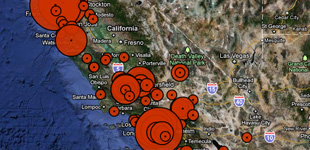
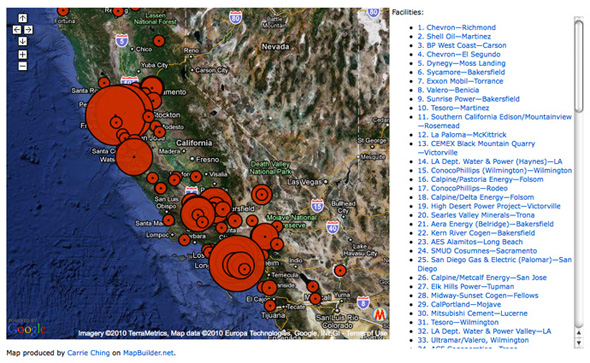 This map, produced for California Watch, shows the top 100 carbon dioxide-producing facilities in the state, according to data released by the California Air Resources Board. Power plants and oil refineries appear to be the largest culprits. I researched and mapped the individual facilities on a Google satellite image using Mapbuilder.net. I designed custom markers to visually show the amount of carbon dioxide emissions from each facility, and calculated conversions to demonstrate the scale and impact of those emissions.
This map, produced for California Watch, shows the top 100 carbon dioxide-producing facilities in the state, according to data released by the California Air Resources Board. Power plants and oil refineries appear to be the largest culprits. I researched and mapped the individual facilities on a Google satellite image using Mapbuilder.net. I designed custom markers to visually show the amount of carbon dioxide emissions from each facility, and calculated conversions to demonstrate the scale and impact of those emissions.